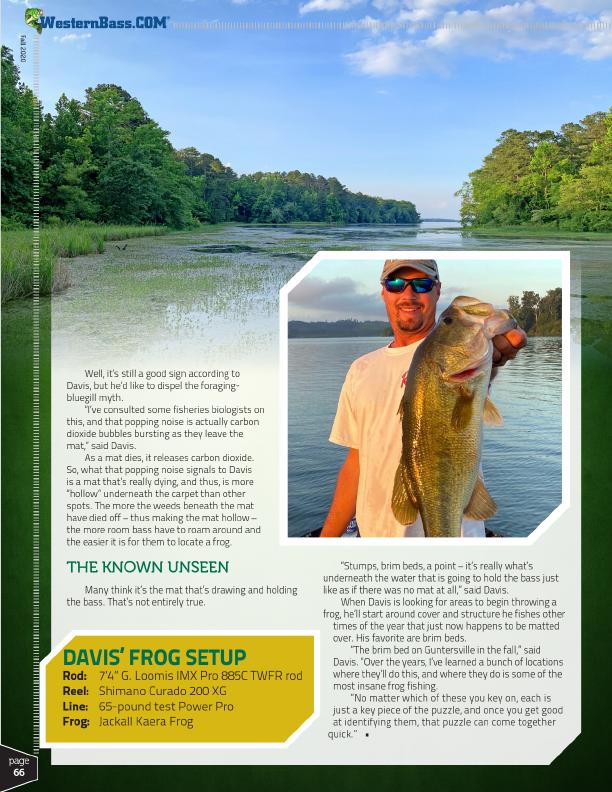
®
Fall 2020
page 66
Well, it’s still a good sign according to Davis, but he’d like to dispel the foraging- bluegill myth.
“I’ve consulted some fisheries biologists on this, and that popping noise is actually carbon dioxide bubbles bursting as they leave the mat,” said Davis.
As a mat dies, it releases carbon dioxide. So, what that popping noise signals to Davis is a mat that’s really dying, and thus, is more “hollow” underneath the carpet than other spots. The more the weeds beneath the mat have died off – thus making the mat hollow – the more room bass have to roam around and the easier it is for them to locate a frog.
THE KNOWN UNSEEN
Many think it’s the mat that’s drawing and holding the bass. That’s not entirely true.
DAVIS’ FROG SETUP
Rod: 7’4” G. Loomis IMX Pro 885C TWFR rod Reel: Shimano Curado 200 XG Line: 65-pound test Power Pro Frog: Jackall Kaera Frog
“Stumps, brim beds, a point – it’s really what’s underneath the water that is going to hold the bass just like as if there was no mat at all,” said Davis.
When Davis is looking for areas to begin throwing a frog, he’ll start around cover and structure he fishes other
times of the year that just now happens to be matted
over. His favorite are brim beds.
“The brim bed on Guntersville in the fall,” said
Davis. “Over the years, I’ve learned a bunch of locations
where they’ll do this, and where they do is some of the
most insane frog fishing.
“No matter which of these you key on, each is
just a key piece of the puzzle, and once you get good
at identifying them, that puzzle can come together
quick.” •